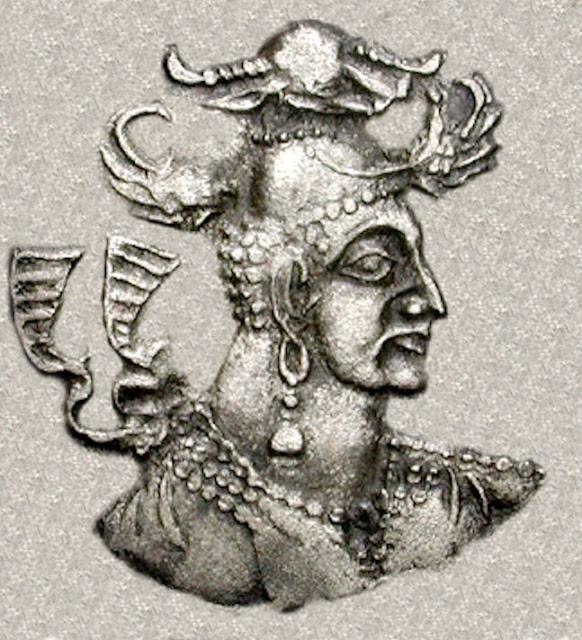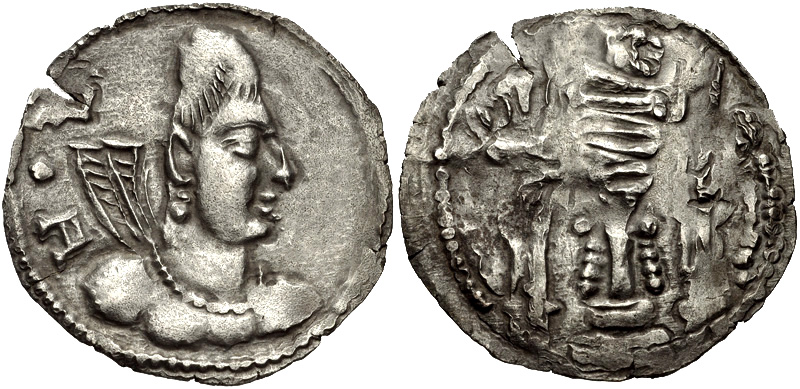Alchon Hun coin of a young Khingila I 430-490 CE
"At a certain point in time, which cannot be exactly pinpointed, the Alkhan took over the on-going production of a Kidarite mint in Gandhara, as is shown by the unchanging reverse and uninterrupted style. Initially they struck a "transition type" of Kidarite typology in the name of Khingila. Here for the first time the king wears a crown with a crescent moon above the forehead and wings at the sides. Shortly thereafter the same crown appeared on the regular coins struck by Khingila, and from this point on, a crown became an ordinary element on the coins of the Alkhan.
Historical sources and archaeological finds reveal that at this time the Alkhan had expanded far eastward across the Indus and had reached at least Taxila. In their portrayal of the Huns, the authors of Antiquity had nothing positive to say, describing them as barbaric intruders. For this reason the destruction of Taxila was long attributed to them. However, new archaeological research has revealed that this image does not correspond with historical reality. The Hunnic rulers were more often donors of religious monuments and presented themselves as an integrative power".
-taken from Kunsthistorischen Museums Wien
Source:
https://franpritchett.com/00routesdata/0400_0499/hunacoins/hunacoins.html
Quote:
https://data1.geo.univie.ac.at/projects/dasantlitzdesfremden/showcases/showcase7%3Flanguage=en.html
,%20with%20a%20Brahmi%20inscription,%20perhaps%20from%20a%20mint%20at%20Taxila2.jpg)


Comments
Post a Comment